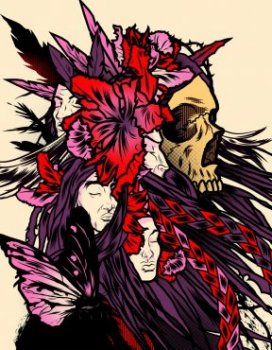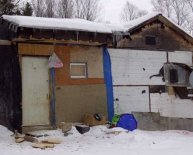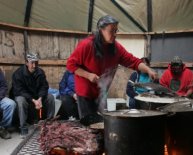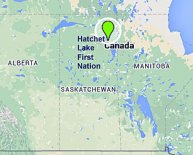
Nations in Canada
 Every July, a lot more than a million individuals descend on Calgary, Canada, for Stampede, a 10-day rodeo and event billed as “The Greatest exterior Show in the world.” A prairie town simply east regarding the Rockies, Calgary is overwhelmed with cowboys and denim-clad wannabes looking to eat fried food and watch bull riders. Stampede is also western Canada’s answer to Mardi Gras. Patrons pack shoulder-to-shoulder into neon-lit saloons and cavernous clubs, in which feminine bartenders in crop tops and hot jeans wander dance flooring bearing trays of shots. Organizations with brands like “Bust Loose!” deploy hundreds of buses, equipped with booming stereos and party poles, to carry revelers on hours-long pub crawls.
Every July, a lot more than a million individuals descend on Calgary, Canada, for Stampede, a 10-day rodeo and event billed as “The Greatest exterior Show in the world.” A prairie town simply east regarding the Rockies, Calgary is overwhelmed with cowboys and denim-clad wannabes looking to eat fried food and watch bull riders. Stampede is also western Canada’s answer to Mardi Gras. Patrons pack shoulder-to-shoulder into neon-lit saloons and cavernous clubs, in which feminine bartenders in crop tops and hot jeans wander dance flooring bearing trays of shots. Organizations with brands like “Bust Loose!” deploy hundreds of buses, equipped with booming stereos and party poles, to carry revelers on hours-long pub crawls.
For Canada’s aboriginal individuals, Stampede offers another kind of gathering: the opportunity to showcase their cultures. (Indigenous populations through the country’s 634 First countries and Métis and Inuit people.) At Stampede Park, the event’s main grounds in downtown Calgary, local craftspeople reveal spectators how-to boost tipis, carve knives out-of stone, and use butchered creatures’ stomachs as cooking vessels.
On July 11, 2007, Sandra Manyfeathers, an area educator, performer, and person in the bloodstream Tribe, ended up being slated to be involved in the celebrations. Then 36, Manyfeathers would join various other indigenous performers at one of Stampede’s Grandstand Shows, nightly enjoyment extravaganzas featuring neighborhood skill. She hoped that the woman older cousin, Jacqueline Crazybull, will be watching.
With a high, good cheekbones and lengthy, dark tresses, the siblings — two of 12 siblings — looked alike. Crazybull had helped raise Manyfeathers after their mom passed away once they were youthful — 20 and 12, correspondingly. Crazybull continued having several kiddies of her very own. The woman life hadn’t been easy; she’d struggled with medicine addiction and had sometimes been homeless. Nonetheless, she ended up being lighthearted and fast to kindness, with a wide look and a warm laugh. She frequently arrived to cheer at Manyfeathers’s dance shows.
But Crazybull never ever caused it to be. At about 4 a.m. that July 11, she and a cousin, Kirk Steinhauer, were hungry for a snack and popped into a corner shop on Calgary’s Red Mile, a strip of restaurants and pubs close to Stampede Park. After the 2 left the store, a team of young men in a sedan pulled up to the curb, rolled down a window, and asked for guidelines. Crazybull wandered up to help. Steinhauer sat on a bus-stop bench and took their eyes off his cousin just for a minute. Then he heard this lady shout.
The sedan ended up being peeling away outside. Crazybull set crumpled in discomfort in the pavement. Steinhauer dashed more than and saw that she ended up being alive but bleeding profusely from a stab injury to the woman tummy. In a few minutes, Crazybull ended breathing. She had been one of five folks attacked that evening in Calgary, apparently at random, because of the same males. She had been really the only aboriginal victim, together with just one whom died.
Manyfeathers heard the news headlines that afternoon during a truck finding your way through the Grandstand Show. She recalls experiencing disbelief. It had beenn’t the 1st time heartbreak had moved her household. In 1991, another sibling, Yvonne, was beaten to death by a relative’s boyfriend. Eight years later on, a cousin, Gloria Blackplume, was indeed present a Calgary alley, banged to death by two male acquaintances.
Their particular tales are part of a bigger tragedy. According to 2011 data, though Canada’s 718, 500 indigenous females form only 4.3 per cent for the nation’s feminine populace, they represent around 5 times as numerous feminine homicide victims. Canadian police have found that 4.5 out of every 100, 000 native women pass away by homicide — for ladies in general, the figure is lower than 1 — and therefore about 1, 200 being slain or went missing over the past three decades. Nongovernmental research, however, suggests the actual number may top 4, 000. What number of cases being fixed is yet another point of dispute: The government claims nearly 90 %, however some native activists state it is nearer to 50.
On guidance of tribal elders, Manyfeathers went ahead with her Stampede overall performance in her own sister’s honor. Dressed in a colorful beaded gown with her tresses in 2 dense braids, she took the phase. Followed by a drummer and led by instinct, Manyfeathers executed fast, complex jumps and measures while twirling a shawl and spinning. She didn’t register the audience. Just as if in a trance, she moved limited to her sis that night.
Later, she went along to a nearby restroom with another sibling, who at Manyfeathers’s request used a pair of scissors to stop her braids. Inside her tradition, long-hair is a sign of well-being. Shearing it really is an act of mourning additionally produces room for religious development.
Several days later on, Manyfeathers placed the braids, nonetheless laced with beads and feathers, on her behalf sister’s casket whilst had been decreased into the planet. Their particular First Nation customs would show several of Manyfeathers’s just sourced elements of solace since the search for the woman sister’s killers unfolded — and then sputtered to a painful halt.
“You don’t need feel sorry for me personally, ” Manyfeathers claims. “As harsh as things tend to be for initially Nation individuals, we’ve actually created an art to be able to cope with things.” It’s the center of April 2016, and she’s sitting across from me personally over scrambled eggs at a diner perhaps not not even close to Stampede Park. At 45, Manyfeathers consistently dancing, and she again wears her hair long.
a cultural educator by trade, Manyfeathers has got the hard disposition of somebody who’s spent years living a national crisis. Among the lacking and slain aboriginal ladies, some have been felled by random crimes. Other individuals have-been intercourse workers strangled by johns, teenage runaways targeted by violent offenders, or sufferers of abusive boyfriends. Specific areas tend to be more affected than others — a lonely stretch of hill roadway in British Columbia is known as the “Highway of rips” because lots of women have actually died or disappeared truth be told there — but no place is immune.
What unites the instances would be the problems that make native women susceptible to physical violence, grounded in a colonial history of neglect and embarrassment. Until just a few decades ago, the Canadian government attempted to remove aboriginal countries. Among other policies, hawaii denied locals voting legal rights until 1960, unless they consented to forgo indigenous status. Canada additionally forced 150, 000 aboriginal kiddies into “residential schools” — state-funded boarding establishments in which assimilation into white culture had been mandatory. Students had been beaten if they talked in their native tongues, and an unknown few girls had been sterilized. The final of 130 schools didn’t shut until 1996.
Today, Canada’s 1.4 million indigenous folks sustain financially — 36 % of native ladies reside in impoverishment, by way of example, versus 17 % of these non-indigenous alternatives. One-third of indigenous folks involving the centuries of 25 and 54 have lower than a higher school training. Substance abuse is a rampant concern; in a 2011 national study of First Nation adults residing on reserves plus northern communities, 83 per cent cited it once the biggest threat to aboriginal health. Dawn Lavell-Harvard, president associated with the non-profit Native Women’s Association of Canada (NWAC), claims she when heard domestic misuse in aboriginal households labeled as since normal as keeping “ketchup in fridge.”

















